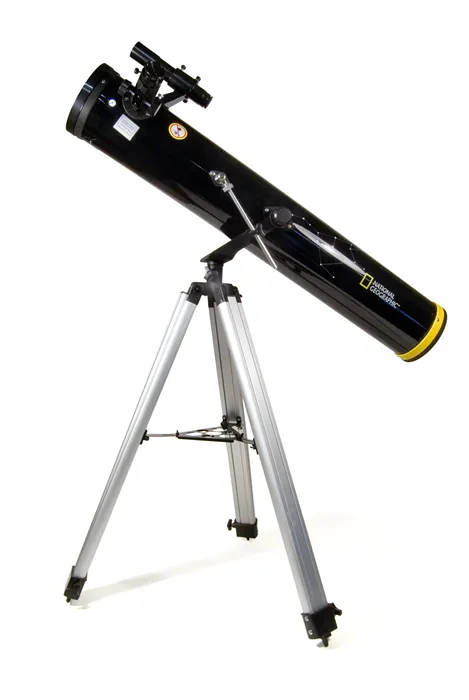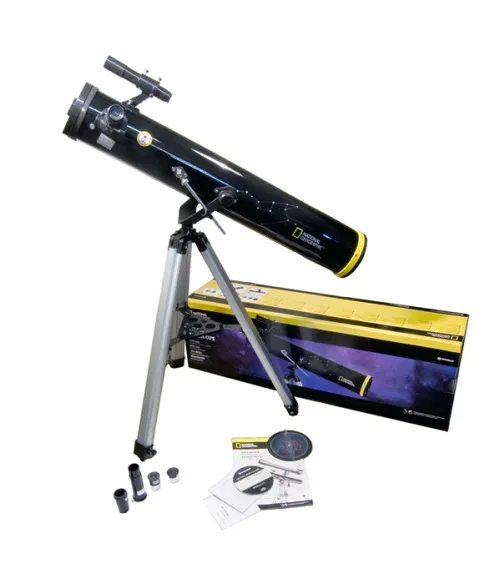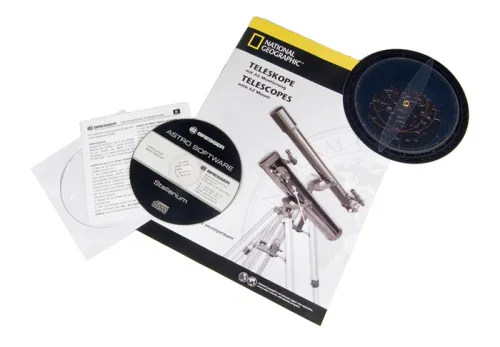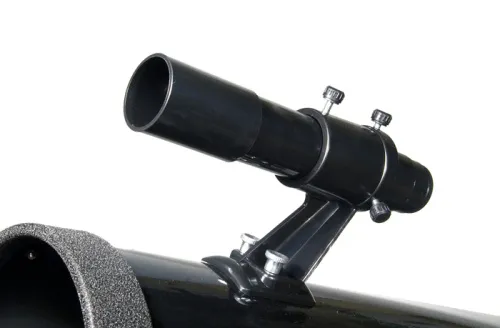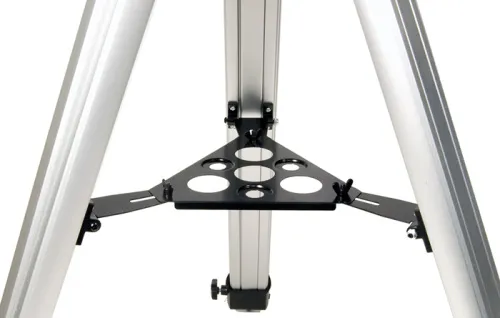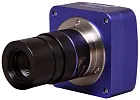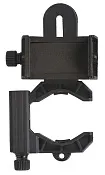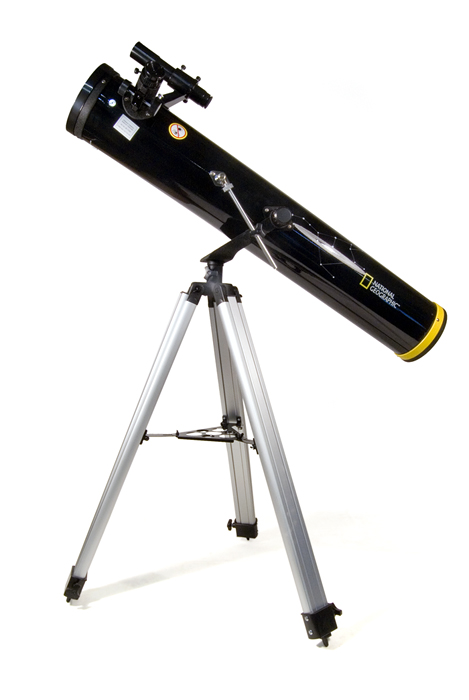Bresser National Geographic 114/900 AZ Telescope
Newtonian telescope. Primary mirror diameter (aperture): 114mm. Focal length: 900mm
| Product ID | 51455 |
| Brand | Bresser GmbH, Germany |
| Warranty | 2 years |
| EAN | 4007922201528 |
| Package size (LxWxH) | 29x27x95 cm |
| Shipping Weight | 7.97 kg |
Fully equipped, and with an azimuth mount that is easy to use, the Bresser National Geographic 114/900 AZ Telescope is ideal for a beginner. This classic Newtonian reflector with a large primary mirror shows not only the big planets, but also bright deep-sky objects. A powerful 6x30 optical finder with a wide field of view allows you to quickly find the desired objects on the starry sky. The range of magnification in basic configuration is 36–67x. The mirror has a special protective coating that prolongs its service life and prevents darkening. A robust, stable aluminum tripod with adjustable height provides proper stability of the entire structure.
Features:
- Newtonian reflector
- Ideal for beginners
- Special protective and anti-reflective coating
- Simple alt-azimuth mount
The kit includes:
- Bresser National Geographic 114/900 AZ Telescope
- Alt-azimuth mount
- Aluminum tripod
- Accessory tray
- Eyepieces: 4mm, 9mm, 25mm
- 1.5x erecting eyepiece
- 3x Barlow lens
- Finderscope: optical, 6x30
- Rotatable star chart
- Software CD
- User manual and 5-year warranty
| Product ID | 51455 |
| Brand | Bresser GmbH, Germany |
| Warranty | 2 years |
| EAN | 4007922201528 |
| Package size (LxWxH) | 29x27x95 cm |
| Shipping Weight | 7.97 kg |
| Optical design | reflector |
| Optical scheme | Newtonian |
| Primary mirror diameter (aperture), mm | 114 |
| Focal length, mm | 900 |
| Highest practical power, x | 228 |
| Magnification, x | 36 — 675 |
| Aperture ratio | f/7.9 |
| Eyepieces | 4mm, 9mm, 25mm |
| Eyepiece barrel diameter, in | 1.25/2 |
| Barlow lens | 3x |
| Finderscope | optical, 6x30 |
| Telescope control | manual |
| Mount | alt-azimuth |
| User level | beginners |
| Observed object | deep-sky objects |
Convenient diagrams that describe how to install additional accessories on refractors and catadioptric telescopes
Find out how to assemble a telescope on an example of the Levenhuk Skyline 90x900 EQ telescope
This short guide will help you avoid typical mistakes and learn more about telescope and mounting types
The basics of astronomical observations for beginners
In this article we have gathered answers to some of the most frequently asked questions about telescopes
How telescopes work?
You can actually perform observations from your balcony!
All about telescope sizes, types, magnification, and mounts
Learn how to set up and use the telescope properly
Astronomy in light-polluted skies. Find out what you can observe in the city
Read an interesting comprehensive article on telescopes for little astronomers
Celestial objects you can observe with telescopes of different apertures
Colored and vivid images of galaxies, planets and star clusters entrance everyone who is fascinated by boundless space
Find an interesting review on the history of the changes to a refracting telescope
To make the process of choosing a telescope easier, we will tell you about the characteristics of the most popular types of telescopes today
Learn everything you need to know about refractor telescopes to make the right choice

